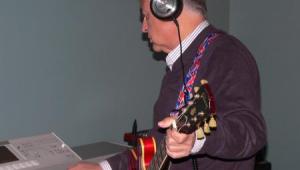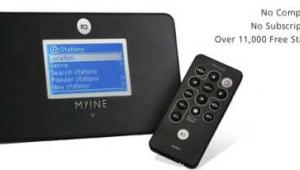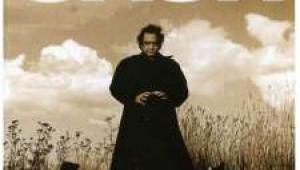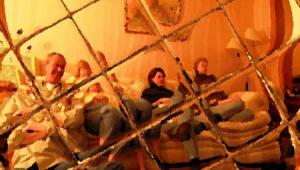Things To Do with Your Laser Disc Player When You're Dead

This stuff follows you around like a dead dog, meaning, it doesn't follow you at all, you have to pick it up and take it everywhere you want it to be. Like a retarded Visa card.
Two laser disc players, buried in a closet, waiting to play the near one hundred movies that I collected at prices I'm too embarrassed to admit to now. Back then, you'd think nothing of paying $40 for the privilege of owning a double disc that had you swapping discs in the dark at usually the most inappropriate points during a movie. But there was no choice if you owned a CRT projector. On my Dwin CRT projector, Laserdiscs were the only thing that looked good on the big screen until DVDs and HiDef came along.
Why two players? My first one was the high-end Pioneer Elite CLD-97. This is a beautiful piece of furniture. And heavy. In the high-end game, heavy usually translates to quality. For instance, when Heavy breaks, it costs a fortune to ship it back to the manufacturer. Now that's a sign of quality.
The CLD-97 has a coaxial digital output. Most players in the early and mid Nineties did not. You had CD quality sound which turned into a reasonably surrounding 5.1 soundtrack when played through Dolby Pro Logic which was the only game in town in the early days. Too bad Pro-Logic IIx wasn't available a decade ago. I still think PL II is the cat's meow.
If you own a laserdisc player, you can say things like "cat's meow."
When discrete 5.1 sound came along (gather round boyz and girlz), it wasn't, as many might expect, with the advent of the DVD. Both flavors, Dolby Digital and DTS, were actually first introduced with laser discs. I know, I'm rocking your world.
DTS could be encoded on the digital surround track of a laser disc player and decoded by your receiver or processor if so equipped (my Theta Casablanca has the processing built in). But Dolby Digital used one of the two analog audio channels of the laserdisc to hold a modulated Dolby Digital signal. You needed a special player with an AC-3 RF modulator and a special receiver function called an AC-3 RF Demodulator to make this work.
And you thought having to select 4x3 or 16x9 from your DVD player's setup menu was complicated.
Anywho, on to the 2nd laserdisc player, a Pioneer CL 505. The Pioneer offered the AC-3 output which plugged nicely into my special AC-3 demod card in the Casablanca. I dare say you could buy a decent 5.1 channel Denon receiver today for what that single option added to the price of the Casablanca. But wow, this was really exciting stuff back then!
Of course, the CL 505 (a very non-Elite Pioneer with cheap written all over it - I mean come on, it weighs what, about 2 lbs?) didn't have a digital coaxial output. So here's how the decision process went when reaching for a laserdisc: Is it a Dolby Digital encoded movie? If so, use the cheap, non-flipping (oh yeah, you had to had to get up to flip sides too) CL 505. DTS and everything else? The Pioneer Elite CLD-97 worked great.
After checking what a CLD-97 went for recently on ebay, albeit with lots of collectible discs, I may want to dig mine out of the closet, if I can ever get back that far. Of course, putting a laser disc player into the rack begs the question, would I ever use it? Does anybody still watch their laser discs?
Is there life before DVD?
- Log in or register to post comments





























































